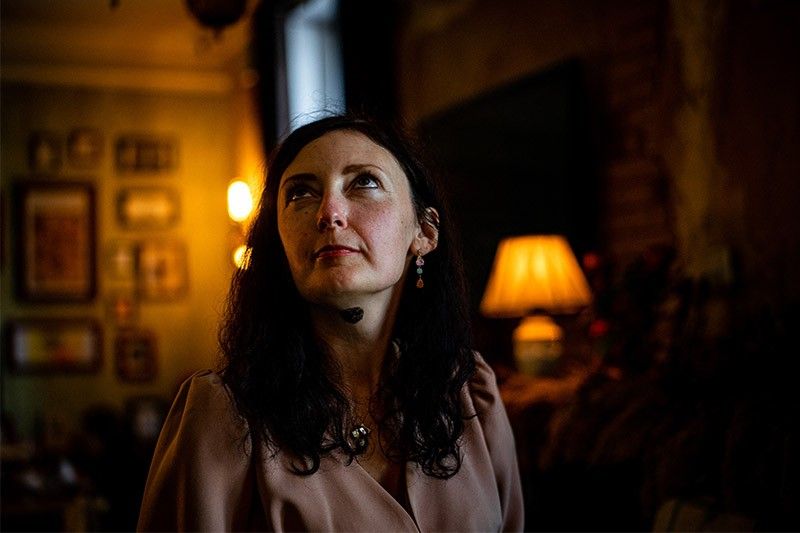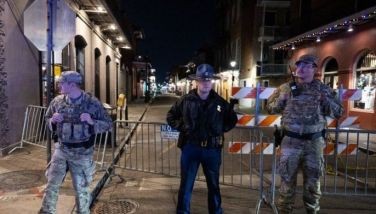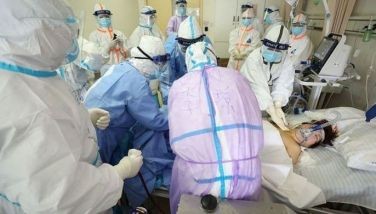'Changed radically': How women fight in Ukrainian city

MYKOLAIV, Ukraine — The very day Russia launched its attack on her country, Svitlana Taranova enlisted in the Ukrainian army in the southern city of Mykolaiv, her birthplace.
"At 11 am on February 24 my contract with the territorial defence was signed," said the former construction firm manager who is in her 50s.
"It was the only possible decision, not a sacrifice," she said.
Mykolaiv came under threat rapidly after Kherson, 70 kilometres (43 miles) to the east, was taken by Russian forces.
President Vladimir Putin's army needed to take Mykolaiv if it was going to conquer the Black Sea transport hub of Odessa, its main target and a two-hour drive to the west.
So the Russians began to pound Mykolaiv with artillery, massively and methodically.
Taranova, by now in the infantry, often found herself in close combat with Russian troops.
"In the beginning, I was terrified of the cluster bombs, my heart missed a beat every time one went off," she said.
But then the fear gave way to grim determination. "I no longer feel I need to hide. All I want is revenge," she said.
While an AFP team was in Mykolaiv in September and October, the city was bombarded almost every night.
'We feed the soldiers'
As Taranova was battling Russians in combat, other women contributed to the war effort in different ways, an AFP team found.
"We're fighting here, too," said Svitlana Nitchouk, 41, a bakery employee. "We feed the soldiers."
When AFP met with her, she was watching an emergency unit clearing the rubble of an old apartment block in the city centre. The bakery where she works, on the ground floor, was badly damaged.
The remains of a nearby regional authority building miraculously holds up after a Russian missile destroyed seven floors.
Julia, a resident living nearby, said her apartment had already been hit three times.
The IT worker in her thirties took her daughter to the relative safety of western Ukraine, but regularly returns to Mykolaiv -- mostly to distribute cars or military equipment to the fighters, funded by online appeals she has launched.
In another neighbourhood Julia Kirkina, a musicologist, sings and plays piano in a restaurant every Friday.
"Music is one of the best cures for the spirit," she said. "My vocal therapy helps people stay calm and be optimistic."
Mykolaiv remained within range of Russian artillery fire for 262 days, and escaped bombing for barely 50, according to local authorities.
Then, on November 13, Kherson was recaptured by Ukrainian troops and Mykolaiv was no longer part of the war's frontline.
By then more than 150 of the city's residents had been killed and 700 injured.
Between 300,000 and 500,000 people had fled. Four-fifths of the women have left, according to the regional administration, making Mykolaiv a city populated almost entirely by men.
Millions of Ukrainian women have left their homes since the start of the war, some fleeing what the United Nations in a recent report called "alarming increases in gender-based violence".
'No time to panic'
Despite their increased vulnerability, many women in Mykolaiv refuse to see themselves as victims, said psychoanalyst Irina Viktorovna.
"They have no time to panic or lose themselves," she said, although she acknowledged there had been cases of breakdowns.
The military threat has been repelled for now, but life remains precarious, residents told AFP by telephone.
Like elsewhere in Ukraine, cuts to supplies of electricity, heating and water are commonplace since Russia targeted civilian energy infrastructure.
Aleksandra Savitska, who used to work as a hairdresser, has not returned to her old job. Instead, she and her husband now run an NGO which distributes food and supplies to soldiers and civilians.
A video on her Instagram account shows the 25-year-old in Kherson, wearing a helmet and flak jacket, after handing out food and hygiene products.
"My life has changed radically," she told AFP by telephone. "I used to make women look beautiful. Now I'm a volunteer. That's my job."
- Latest
- Trending




























